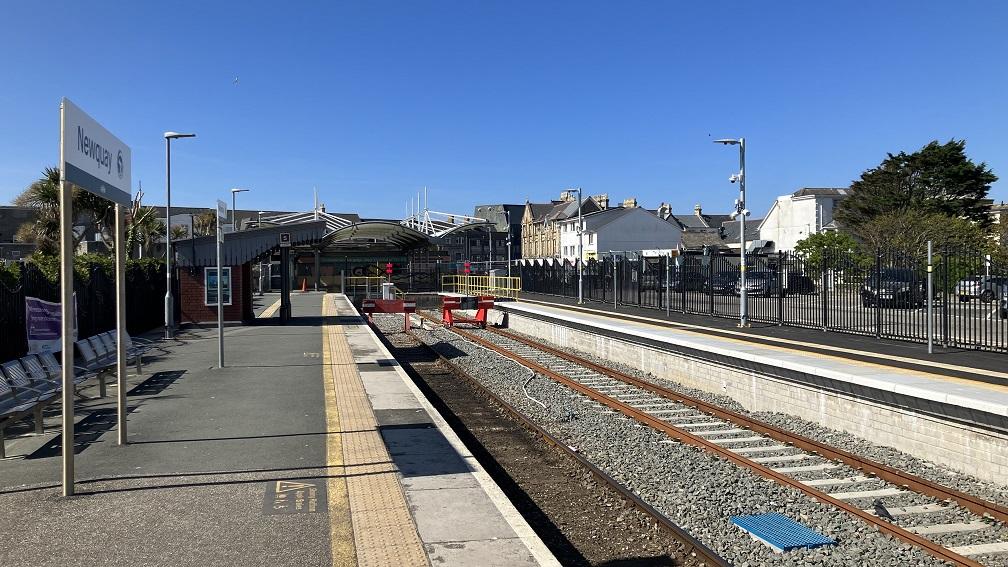
October 2025 Newsletter
Hello and welcome to October’s newsletter – unusually from two of us this month, reflecting the latest stage of work we have undertaken together, utilising both our health and safety and economic regulatory roles, to help deliver the best outcomes for users and those who interact with the rail system, taxpayers, and the wider economy.
In March this year ORR published recommendations designed to help the rail industry in Great Britain take a more evidence-based and consistent approach in weighing the costs and benefits of safety decisions.
This has instigated a period of significant growth and learning from the industry as a whole, ensuring that decisions made both improve the safety of the railway and maintain good value for money.
We have been pleased to see how much progress there has been over the last six months on our recommendations, with Network Rail and RSSB both undertaking actions.
We, too, have not stood still, strengthening our own ways of working across safety and economic regulation and also providing our health and safety priorities to funders to support train operator business planning, and encourage growth through consistent standards.
Before our final review is published in March, we will be looking at how the Railway applies the recommendations from our report this year. Given the positive engagement to date we are optimistic on what can be delivered in the months and years ahead and that putting this into practice will lead to a railway that delivers even better results on safety and value for money.
Will Godfrey
Director Economics and Markets
Richard Hines
Director, Railway Safety
Top stories
Our latest economic monitoring
In September we published two economic monitoring reports – our latest Open Access monitoring report which covers developments in the sector and the performance of Open Access operators, and our Annual Efficiency and Finance Assessment of Network Rail (AEFA). The AEFA highlights efficiency improvements and financial performance metrics for the first year of control period 7 (CP7).
In 2024/25 Network Rail delivered £325 million of efficiency improvements, 24% ahead of our target for the year (£263 million). Leading indicators also show that Network Rail is reasonably well placed for the delivery of cost efficiencies in the second year of its five-year control period (CP7). These are all welcome signs and reflect the efforts Network Rail is making with contracting strategies, modernising maintenance, the use of minimum viable product approaches to project delivery and greater use of technology.
However, net of income, Network Rail spent £243 million more than originally planned, despite delivering efficiency improvements. This was driven by a combination of factors such as inflationary pressures that pushed up the cost of renewals projects, pay awards exceeding CPI inflation, and financial payments to train operators (linked to not achieving train performance benchmarks).
We will continue to work with Network Rail on reviewing its plans and reporting what is delivered in return for the funding secured through our periodic review. This is important not just as we review Network Rail’s performance on the CP7 settlement but also as we work with government ahead of the creation of Great British Railways and in readiness for the next funding period.
Service standards
As part of our ongoing work into ensuring our regulation is as efficient and proportionate as possible, we have engaged across the rail sector to review our industry-facing service standards to check they are relevant and challenging, and whether other standards would be useful.
The engagement across the rail sector has led to six new service standards and two which reduce the time processing time of existing standards. We have committed to changing our process in a further seven standards. We will review our progress in 12 months.
This review of service standards sits alongside three other ORR projects:
- Over the next five years, seeking to reduce by a quarter the administrative burden of our regulation and monitoring on London St Pancras Highspeed and National Highways by reviewing our policies and data and information requirements. This will support our duty to ensure that we are acting in a proportionate and targeted way while effectively fulfilling our statutory roles.
- Engagement with Network Rail to identify and implement opportunities to increase the effectiveness and efficiency of how the railway delivers for its stakeholders, ensuring we are using resources in ways that add most value. A letter is on our website
- A deep dive into the Rail Network Investment Framework with the supply chain to encourage direct investment into railway infrastructure.
ORR Tenders for Whole System Monitoring & Rail Reform Strategic Support
The Government’s planned rail reform will transfer responsibilities from Network Rail and the Department for Transport to Great British Railways (GBR), significantly altering ORR’s economic role. While the final structure depends on forthcoming legislation, ORR is preparing for a broader monitoring remit that could encompass all GBR activities.
To support this transition, ORR has issued a tender for consultancy support to help define our future role, ensure regulatory effectiveness, and maintain oversight of both GBR and non-GBR operators.
This flexible contract will allow ORR to draw on external expertise as needed, ensuring it remains agile, evidence-based, and ready to deliver value for money during a period of major structural change.
The tender Enquiry Deadline is 3 October 2025 at 12:00 midday. The Tender Submission Deadline is 14 October 2025 at 12:00 midday.
Further details are at www.find-tender.service.gov.uk/Notice/058817-2025.
Safety inspectors work with newly nationalised SWR
Three of our HM Inspectors of Railways paid a pre-arranged visit to South Western Railways’ Wimbledon depot in south west London in mid September. The visit allowed ORR to get a dutyholder perspective on introducing a new fleet, and consideration of the health and safety implications the change presents.
The team were shown the new accessibility and sustainability features and were particularly impressed by the new bioreactor toilets. They discussed the challenges of introducing a new fleet when the design specification was developed many years prior to delivery, but also how clear and honest communication with key stakeholders can help to overcome the problems, especially with passengers in mind.
ORR authorises significant upgrades to Newquay Station
We have authorised significant upgrades to Newquay station in Cornwall, including the reintroduction of the station’s second platform, the introduction of a new train passing loop at Goss Moor, and the upgrading or removal of level crossings along the line.
The upgrades, which are part of the Mid Cornwall metro project, are required to provide an enhanced service from Newquay to Par and will improve access to the railway in central Cornwall, with a doubling of capacity at the station from one train every two hours to a train every hour.
The authorisation confirms that standards on areas like health and safety, accessibility, environmental protection, and reliability and availability have been met, and we worked closely with Network Rail and the wider project team throughout.
Speaking to the wider industry
ORR Chief Executive John Larkinson spoke at the Rail Freight Group’s Annual Conference about performance, access and timetabling.
He discussed how ORR manages competing demands and also updated delegates on the progress of our investment network deep dive. This is research HM Treasury asked us to carry out to understand barriers to investment in the UK. That review has revealed strong appetite to invest in the rail sector, but identified several persistent barriers
holding the market back, including a lack of clear policy direction on where private capital is encouraged, limited visibility of long-term investment pipelines, absence of established commercial models, and complex delivery pathways with uncertain planning and approval processes.
Next month ORR will be at Highways UK and reflecting on a decade of our oversight of the strategic highways in England.
Blogs
Measuring the financial health of our rail infrastructure
Will Godfrey our Director of Economics, Finance and Markets explores the finding of our Annual Efficiency and Finance Assessment from Network Rail.
Statistics
Since the last newsletter we have published the following statists:
- Passenger rail performance - Q1 (April to June 2025)
- Freight rail usage - Q1 (April to June 2025)
We are currently working to improve our website and are looking for volunteers to take part in user testing. Please email digital.team@orr.gov.uk if you'd like to take part.

